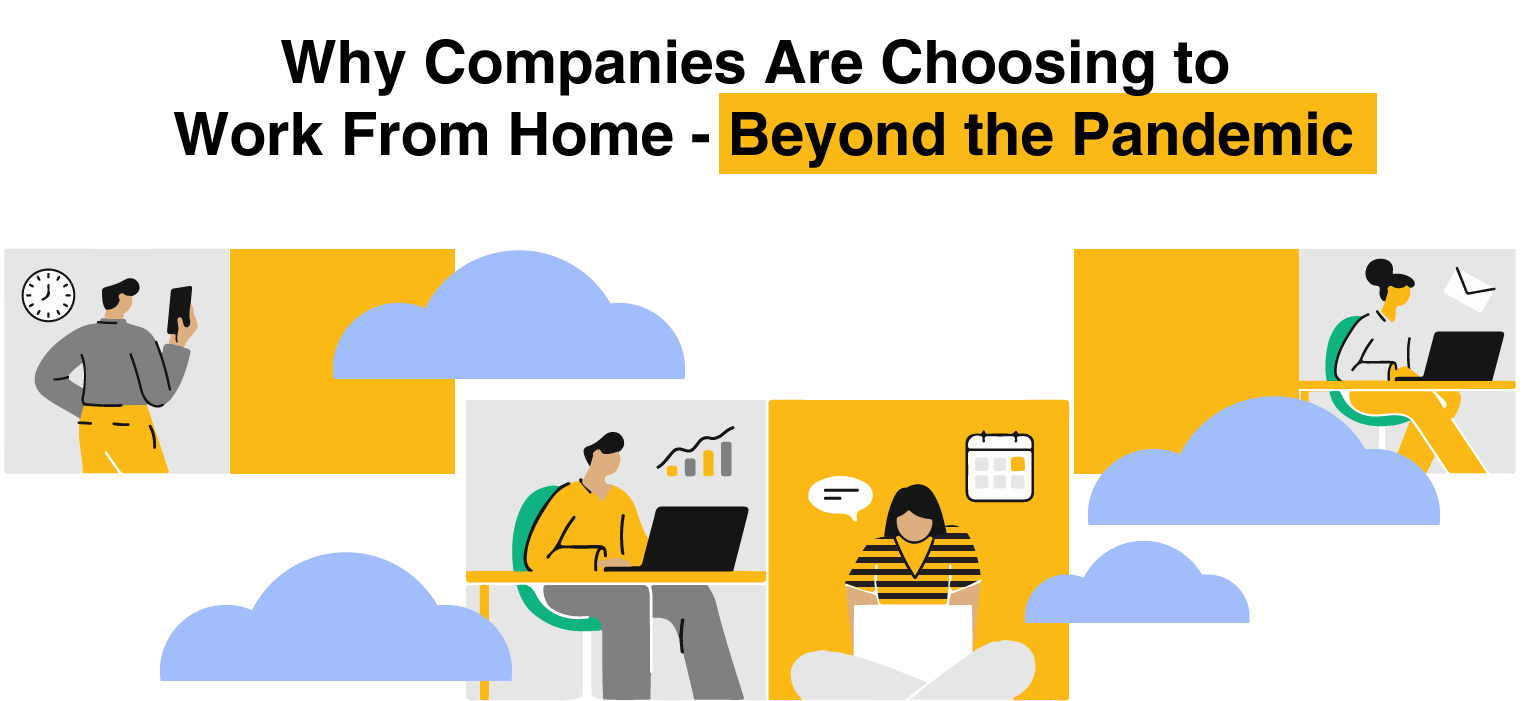Why Companies Are Choosing to Work From Home - Beyond the Pandemic
With the possible exception of the World Wars, very few events have had such radical impacts on the global workforce as the pandemic of Covid-19. Cities shut down, governments closed the borders and all travel stopped - for a while, it felt like we were all stuck geographically. The mandatory lockdowns forced organizations to pivot and restructure to enable employees to work remotely and to tap into new sources of consumer demand.
The pandemic pushed everyone to make an abrupt switch to remote working to ensure the physical safety of all its employees. Though an abrupt switch to working from home was not ideal, many organizations may look to make remote working arrangements a permanent option given the potential cost, productivity, and talent attraction benefits. According to Deloitte’s report on Remote work, they estimate a potential 50 million jobs could switch to remote work across the ASEAN-6 countries.
The lasting impact of Covid-19 on the workforce will be the permanent switch to remote working. Some of the organizations considering this move include:
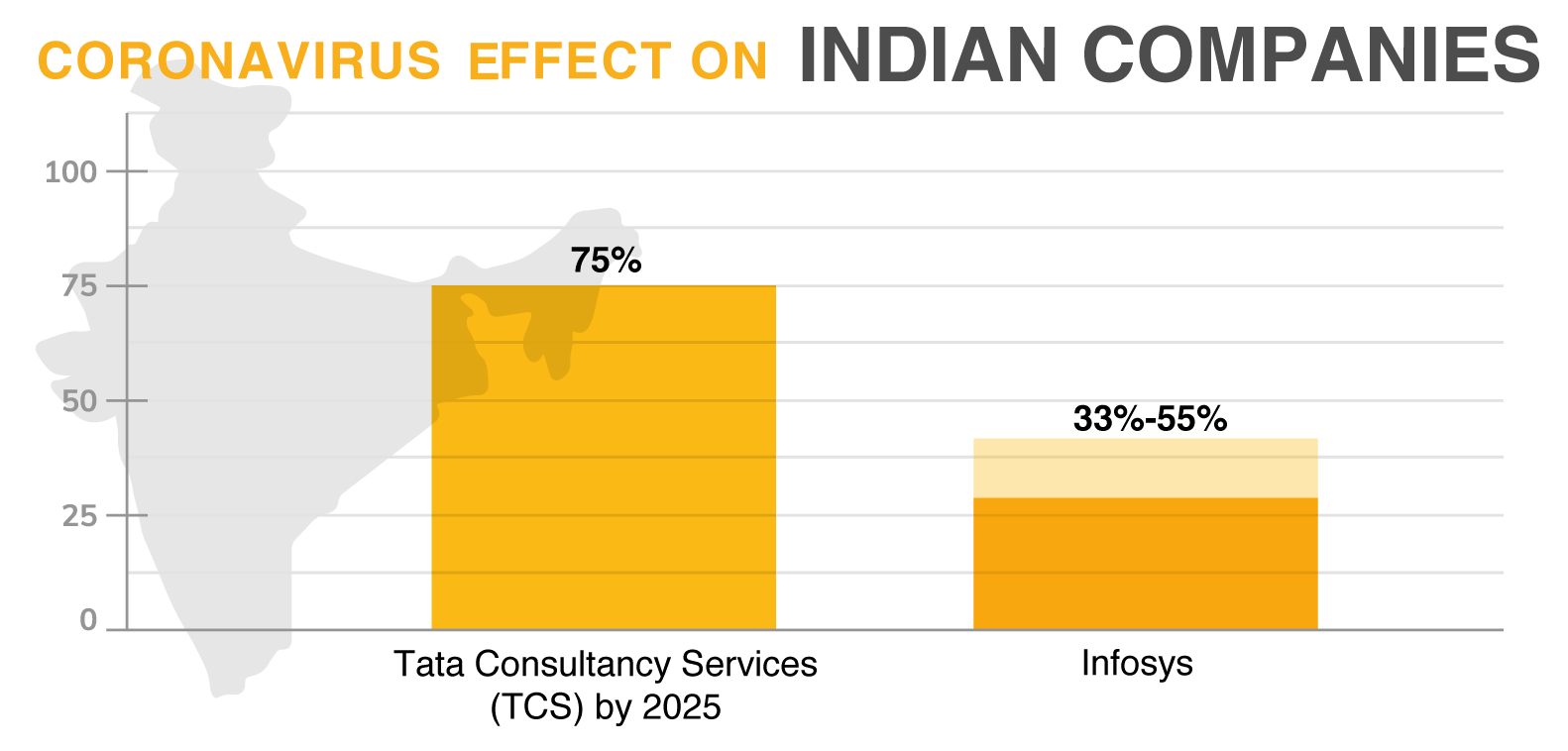
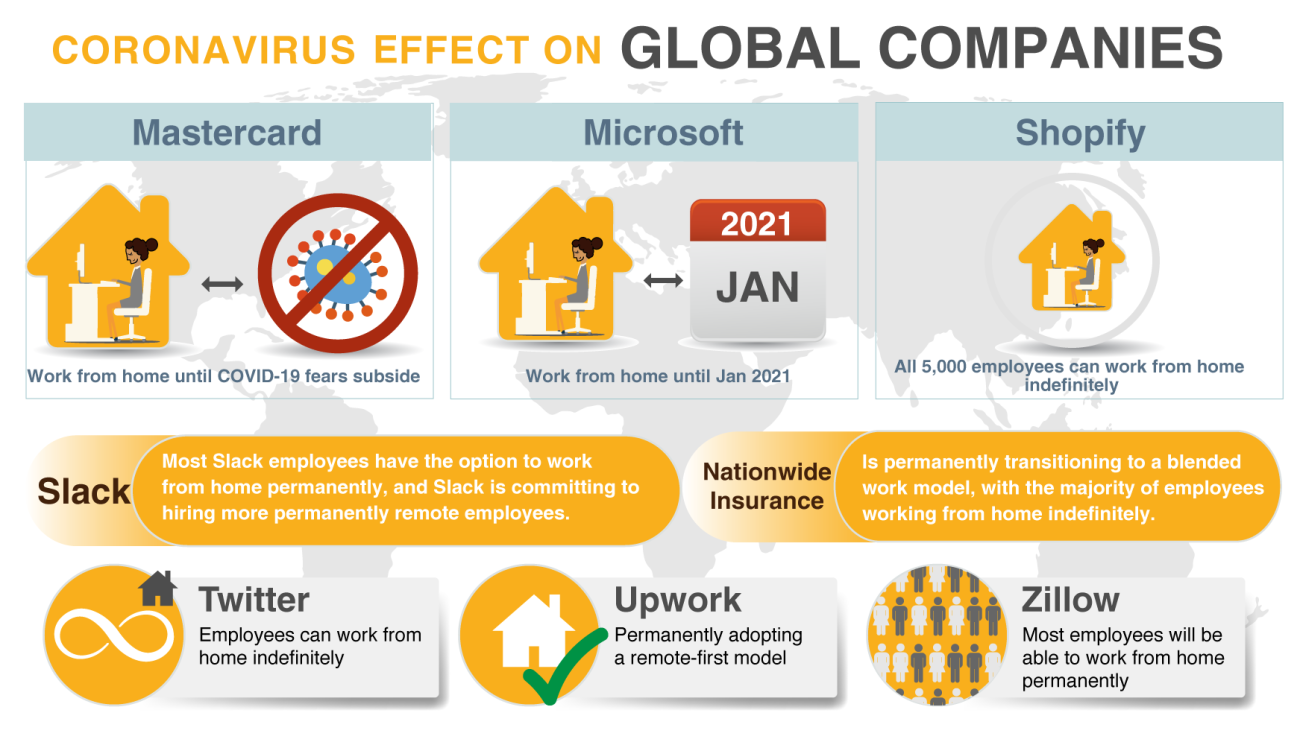
Some sectors like the technology and telecommunications industries demonstrate the greatest upside - there is virtually no ceiling for these industries with the potential to transition 90% of the workforce to remote working.
But the real question is why are organizations making this choice to switch to remote working?
What are the benefits of remote working?
1# Happier employees equate to more productivity: Studies show that remote employees are 20% to 25% more productive than their in-office counterparts. They have fewer distractions, more flexibility to take necessary breaks when needed (including an afternoon siesta!) which psychologists claim helps with overall performance, problem-solving, motivation, and creativity.
Though 21% find that they are less productive, the majority of 72% feel that they are either equally productive or more productive.
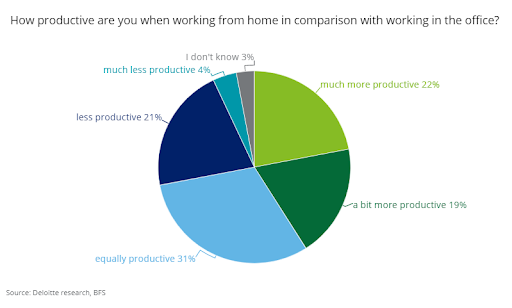
2# Reduces rates of attrition as it caters to employee satisfaction. Employee attrition leads to huge losses. Ketan Kapoor, CEO, and Co-founder, Mettl, an assessment and skill measurement company, cited a study by Mercer Inc that showed that 45 percent of employers reported turnover costs of $10,000 per lost employee, while 20 percent reported costs closer to $30,000.
3# Talent pool expands: Remote working removes the geographical constraints and allows organizations to access those who are not available as part of the traditional pool (like young mothers) and hire the best talent in the market; which means they have a far greater chance of finding someone with the exact skills, experience, and personality to fit best within their organization.
A survey conducted by themomproject.com reveals that 86% of working mothers will leave a job for an opportunity that better supports their work and life considerations.
4# Businesses can save costs: Save costs of physical plush real estate, maintenance, and overheads. You also save on power bills, office supplies, and niceties like break-room coffee and snacks.
According to Global Workplace Analytics, employers can actually save over $11,000 per half-time telecommuter per year.
Here is an illustrated version of saving real-estate costs for six different hybrid/blended working models as presented by McKinsey & Company.
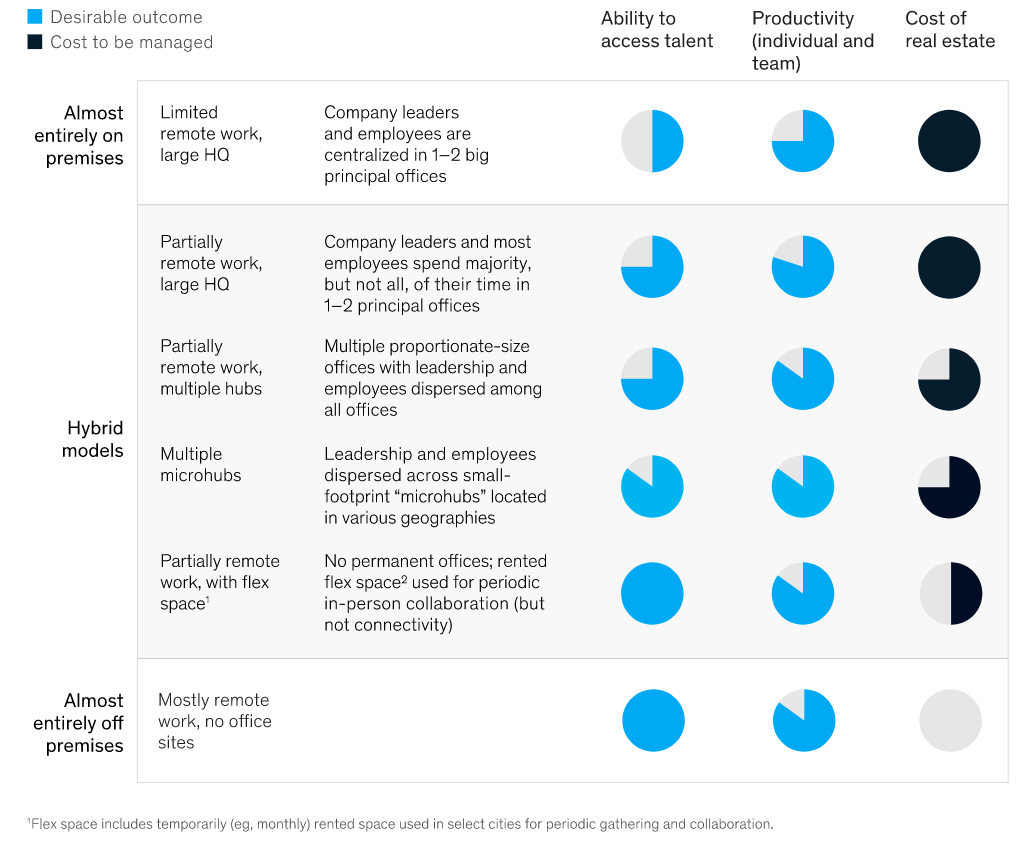
5# Promotes equal opportunities and reduces discrimination: Hiring virtually greatly reduces the potential for discrimination as the employees are largely judged by their credentials rather than any other criteria. SeniorLiving.org in its 2020 report on age discrimination in the workplace, revealed that Americans over age 40, showed that about 1 in 5 workers face age-related discrimination at work. Older workers face discrimination that includes jokes and harassment about their age.
Remote work also easily avoids location bias, which is when potential employees outside of big cities could be excluded from the hiring process, disproportionately affecting talent from smaller towns and underrepresented backgrounds. People are also discriminated against based on their physical appearance and how they dress. More than 1 in 4 employees have experienced discrimination based on their looks. There have been more women than men.
By migrating communication to online portals such as instant messaging, emails, etc. it is likely to equalize opportunities and personalities; and increase the chances of everyone being seen and heard. Maybe the pandemic pushed most of us to reconsider and change our perspectives about remote working, in terms of productivity, costs, and more. There are clear benefits, to both the employee and the employer, to continue these working models well beyond the pandemic.
If you are thinking about signing up for a remote working model for the long haul, you can read here about how you can make remote teams work more efficiently.
-------------------------------------
FlexiBees has provided companies, both startups and established players, with part-time talent for many projects and roles; across a variety of functions & skill-sets like Inside Sales, Business Development, Marketing, Digital Marketing, Public Relations, Investment Banking, Technology, Content Development, Writing, Graphic Design, etc. All these companies have benefited by being able to hire high quality talent at pricing optimised only for the hours of work they need. With the COVID-19 pandemic leading to businesses trying new approaches, strategies, MVPs, etc, part-time and project-based talent, that are high-quality and affordable, can help.
If you have a role requirement, take 2 minutes to fill our form and we will try our best to fulfil it for you, quickly and to your satisfaction.
If you have a role requirement, take 2 minutes to fill our form and we will try our best to fulfil it for you, quickly and to your satisfaction.


